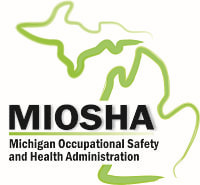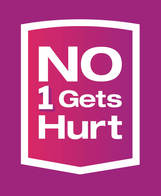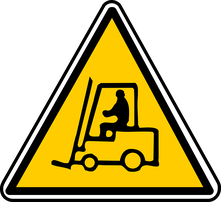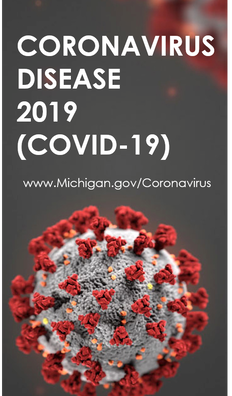1 Comment
Stopping the spread of the virus is the only effective method we have of preventing more infections. Current prevention recommendations have included washing hands more often, cleaning contaminated surfaces and staying away from large gatherings. In response, trade shows and sporting events have been cancelled and churches and theatres are closing their doors for a week or two and are adopting a wait-and-see attitude. Universities and K-12 have extended spring break and cancelled on-campus classes and are moving to online learning until things improve. Recently, even bars and restaurants are being asked to restrict customers or only provide carryout. In the meantime, EHS professionals and HR departments should be following the recommendations from their local and state officials and from OSHA and MDHHS. Those recommendations are aimed at “flattening the Curve” (curve of infection) which means slowing the spread of infection to avoid overwhelming the healthcare system. See this article from the University of Michigan. So, the current infection curve for the COVID-19, that is the number of people becoming infected, is exhibiting an exponential increase. So, as time goes on, we see an increasing number of infected people at an increasing rate. The infection rate topic is illustrated in a Washington Post article that shows a simulated virus in some random, simulated settings. It’s all based on computer models, but it illustrates the point about spreading of infection. If we self-quarantine ourselves (within reason), even for a short while, we help slow down the spread of the disease. Agency Guidelines OSHA’s guideline 3990 can be found at this OSHA link. This guide provides lots of information about COVID-19 and recommendations for you to consider for inclusion in your Infectious Disease Preparedness and Response Plan (IDRP). Some topics you will find interesting include:
The MDHHS has Interim Guidelines for a variety of workplace, school, church and social settings. They include:
The bottom line for managing this disease is to be COVID-Wise, be prepared, avoid exposure and don’t spread it yourself. As always, arm yourself with knowledge. Keep up to date on the latest recommendations from your state and local officials. Here are some other good COVID-19 sources of information to share with your executives and workers: OSHA COVID-19 Web Page Center for Disease Control - COVID-19 Page MDHHS COVID-19 Web Page We’ve all cursed them, those dreaded low-battery beeps in the middle of the night. But, what came next? Did we replace the battery or just rip it out and go back to sleep. Then what? Did we remember a day or two later to replace the battery or did we forget about it until a smoky kitchen reminded us of our folly?
Well, NFPA has a new report out that provides some sobering information to consider. The report focuses mainly on smoke alarm presence and performance in home fires reported to local fire departments across the U.S. Additional topics include the benefits of working smoke alarms, reasons why smoke alarms fail to operate, smoke alarm performance by power source, the difference in smoke alarm performance in one- or two-family homes vs. apartments, and characteristics of fatal home fire victims with and without working smoke alarms. Some report highlights include:
The report can be found at the NFPA website.
fertilizer plant in West, Texas, the President issued an Executive Order 13650 entitled “Improving Chemical Facility Safety and Security.” The goal of the EO was to:
After a myriad of meetings with stakeholders, the USEPA published Amendments to the RMP Rule in the Federal Register on January 13, 2017. Subsequently, delays were issued by the current administration. But on August 17, 2018, the U.S. Court of Appeals decided to vacate the decision to delay and in September the court issued a mandate making the rule effective. And on December 3, 2018, the USEPA published in the Federal Register that the effective date for the amendments was December 3, 2018. See, it’s complicated.
What you really need to know is that some of the amendments require you to make changes to your RMP Program now, some changes won’t be required until March 15, 2021, and still other changes apply either now or in the future, but will only come into play under certain conditions. Lastly, all RMP submittals must be updated to the new requirements by March 14, 2022. I told you it’s complicated. But, let’s look at some of the high points. New Requirements that Must be Implemented Now:
Future Obligations - March 15, 2021:
Obligations to be Implemented under Certain Conditions The best examples here are the Third-Party Audit, Root Cause Analysis and conducting a Public Meeting. Each of these provisions have qualifiers. The regulation states that a third-party audit is only required when:
Similarly, if a reportable release occurs, a root-cause analysis must be done during the incident investigation and the facility must hold a public meeting. These requirements go into effect on March 15, 2021, but are only required if the conditions warrant them. Yes, it is complicated, but manageable. But, be careful, read the regulations carefully so you only implement the things you really need to. If you aren’t sure, give us a call. We are happy to answer questions about these or other RMP or PSM requirements. Here are links to some helpful RMP Rule amendments information.
 The August 9, 2018 Federal Register provided OSHA’s latest amendments of the Beryllium rule (29 CFR 1910.1024) and delayed certain compliance deadlines. We think its helpful for the compliance deadlines to be outlined in chronological order. So we made a list for you. Below are the compliance dates (bolded) for the OSHA rule. If the MIOSHA dates are the same or different, it is noted. Listed below the compliance dates are the various paragraphs of 1910.1024 that are affected by the bolded compliance dates: March 12, 2018 – same for MIOSHA This is the compliance date for obligations contained in paragraphs (c), (d), (g), (k), and (l) of this standard.
December 12, 2018 – MIOSHA Part 340 is March 12, 2018. The amended rule sets this date as the compliance date for “all other obligations” of this standard such as:
March 11, 2019 – same for MIOSHA For paragraph (i) Hygiene Areas and Practices, the following requirements have been postponed until this new compliance date:
March 10, 2020 – same for MIOSHA For Engineering Controls required by paragraph (f) this is the new compliance date. However, It is believed that the intent here is for companies to comply with the non-engineering control portions of this section such as:
We’ll keep you updated on more OSHA and MIOSHA updates of this and other standards in future issues.  I can still remember it today. My first job as a safety manager for a manufacturer that had operations in four states, Canada and Mexico. Very exciting, and what a great opportunity for me to spread my wings …… that is until I started the job and discovered that my predecessor had been a safety Nazi and that the safety culture was old-school and just plain sour. I mean some people did not even want to be seen talking to me. I was seen as just another person who was going to tell them they could not make changes. On top of that, upper and middle management were not too keen on spending money implementing safety. Ya know it was just one of those “Soft” programs that take away from our bottom line, right? Argh!! I was questioning my career choice about that time. But I also saw an opportunity to grow and mature in the field and knew that I wasn’t the only person experiencing these problems. After all these years, I now see that my choice was a good one. However, I still run across companies with these same challenges. How do you get people (hourly and management) to “want” to talk about and implement Safety if they have never been educated as to the financial and production benefits? What do you do when they have been made to see Safety as something they have to do, instead of something that can improve the bottom line and make the factory floor a place where people enjoy working. In this newsletter series I will share with you some challenges I have encountered and some proven techniques I have used and have seen as effective over the 30 plus years I have been in the Safety business. Communication In those famous words spoken in the movie Cool Hand Luke “What we’ve got here is a failure to communicate,” one sees the challenge of an EHS professional. Ok, that’s a bit dramatic, but some days can be like that, right? Everybody is rushing around trying to get product out the door and doing everything in their power to get out of work on time to attend their kid’s soccer game or music recital or get to dinner or the bar. They don’t have time to listen to what YOU, the Safety person, have to say. Then, without warning, someone stops you and asks a question. And you think, this is your big chance to talk to someone about safety or environmental topics. To sell safety and even educate someone on EHS topics. Stop, breath, and think before you talk. Who is your audience? What is really important to this person? How much do they know about the topic in question? What priorities or hot button issues does their department have? What would you like to teach them about the topic or requirements? Selling Safety – One of the first things I tell new safety staff is that they need to always be ready to sell (and educate) people about safety. The worse thing we can do is be unprepared to answer questions. And we need to take our time in answering the questions as they come. After all, we are often in a hurry to get to a meeting, too. So we may not take the time necessary to really answer the person’s questions and make them a safety convert. Compound Interest – Think of safety converts this way. If you can convince one person a week that safety is worth their time and effort, in a year there will be 52 converts. Because people talk to each other, each of the converts will eventually convince a person or two or more, that safety is something worth their time, and before you know it half of the factory floor is part of your safety army. And, if your strategy includes influencing the influencers, then you can really get good results. The influencers are those people on the shop floor who are looked up to for one reason or another. They are leaders, outspoken, friendly to most people and may be quite popular. They can be line workers, line assistants, supervisors and others up the food chain. If they become converts, you’ve got it made. You’ve just multiplied your safety sales force. … a legal pyramid scheme! Avoid Regulatory Jargon - Try to keep the jargon and regulatory chatter at bay. Otherwise you might notice their eyes start to glaze over … you know, you’ve seen it… they’re still smiling but the words are not registering anymore. It doesn’t matter how many degrees or certifications you have, if someone doesn’t understand what you’re saying, the message will not get through. So, speak to people in their own language, free of our EHS jargon. Dosage – As EHS professionals we are concerned with risks associated with exposure, and exposure is measured in dosage. When talking to non-EHS professionals, always consider the size and complexity (doses) of information you provide at any one time. Use language that they understand, not regulatory jargon or text book talk. For example, dole out information in sound bites that people can digest and easily repeat to others in their department. If you are having problems with people using too many extension cords say something like this: About 1/4 of all industrial structure fires are caused by electrical distribution and lighting equipment. While this NFPA statistic does not call out extension cords specifically, a connection can be made and a seed of concern can be sewn (or planted) in a simple sound bite. Engage People – For years OSHA has said that involving workers in EHS activities and decision-making causes them to care more about and implement changes. We see that in our Lean Manufacturing and 5S scenarios too. EHS changes created through employee involvement last longer than if we just tell people to do it. The reason for this is that they now have ownership of the change. So, when an employee complains and asks why they have to do something a certain way, start with asking them to show you the issue at hand. This gets people engaged on the topic and will help you understand the scenario and where the issue is located. Ask them their opinion and about possible solutions to the problem, whether the answer is obvious or not. People have lots of opinions and are happy to share them with you. This engagement helps you build a relationship and provides an opportunity to discuss with them the physical and regulatory aspects of the issue and people can start to see and appreciate more sides to the issue. Empathy – Safety professionals have to practice looking at every disagreement situation from the other person’s point of view. If you can see their point of view and why they feel the way they do, then you will have an insight into how to effectively communicate with them, and what information may be useful during the communication. There is usually a little tenuous history associated with workplace situations, some that have existed for years. Sometimes you can work around these tenuous issues and sometimes you can’t, but talking about them almost always helps. Effective listening is one way to show empathy. Effective Listening – Speaking of effective listening, everybody wants to be heard. Employees in a big factory tend to get lost in the hustle and bustle of getting those orders out. Depending on the quality of their supervisor they may withdraw and lay low just to get through the shift. Effective listening means spending the time, eye contact, asking follow-up questions, paraphrasing what you heard and parroting. All these communication techniques help tell the person that you are listening and you care about their opinion. Patience – Many people don’t like change. As a result, sometimes you need to give people some extra time to let the change sink in and get comfortable with the idea. It’s a time for you to put your communication skills to work. If it’s a change in PPE requirements, sometimes it takes a little more effort like stopping in a day or two after the change to see how the PPE is working. I participated in a situation where we upgraded PPE for a cleaning line and added face shields and nitrile aprons to protect worker’s skin, eyes and clothing from caustic cleaner. There was one particular worker who hated the change and he was outspoken and not easy to talk to on a good day. So, being the caring safety professional that I was, instead of hiding in my cozy office, I made a point of heading out there in the middle of the next shift to see how he was doing. Well, I got an earful as soon as I arrived at the workstation. Too hot, can’t see, the cleaner was still getting on the person’s face. So, I left and went back to my cozy office ….. to get a note pad to do another Job Safety Analysis. But this time the JSA was not so much on the work station and the PPE, but rather on how the person was performing the job with the equipment and PPE assigned. I was patient and let the worker explain his side, I showed empathy and we objectively looked at it from all sides - together. What we found was that the person was being reckless with the cleaning equipment, causing lots of overspray, and he kept touching his face with his glove that had caustic cleaner residue on it. Long story short, we talked, I listened, he listened. With the supervisor’s participation we made some changes to the work station that the worker suggested, and he made some adjustments on how he did his job, and he promised to try harder to keep his hands away from his face. And, after a few more days, he was not so grumpy and not having any problems. In fact, he later became an assistant line leader and he was tasked with helping other workers at that same workstation avoid some of the problems he encountered. He became part of the solution. He was selling safety! And, you know what else? He stopped being the grumpy complainer and started coming up with other improvements to the line that actually made it run better! But, remember, what led to that was an opportunity for him to be heard and become part of the solution and take ownership of the solution. Hey, maybe employee participation works after all! Next time … How Important is Your Attitude Toward Other People? Author: Bill Schneider, CHMM  Every year in June the National Safety Council leads the nation in National Safety Month. This year’s theme is “No 1 Gets Hurt”. National Safety Month focuses on reducing leading causes of injuries and deaths at work, on the road and in our homes and communities. The NSC provides a lot of information on various safety topics. This year’s topics are:
Get the safety materials here.  I had never seen the TV show This is Us before. I just happened to record it after the Super Bowl because I had heard it was good. Well, being a safety person I hit the jackpot. I don’t normally get choked up about TV characters, but this one hit close to home. I was reminded of the fire escape plan I made with my kids years ago when they were young. I even remember sitting on the roof with my daughter outside her second-story bedroom window one evening so she would not be afraid of walking on the roof if she had to escape a fire. I remembered my insistence about changing the batteries in the smoke detectors, not just taking them out when they get low and start to chirp. Yes, I was a pain in the …. So, back to the show. Both floors of the house are involved in what appeared to be a raging inferno. Then, Jack goes back into the house to retrieve the family dog. STOP!! OMG!! What were the writers thinking! When he came out the front door I cried “Foul!” to the writers and producers for allowing him to exit the house so unscathed, hardly even coughing. After all, the house was fully involved. If the smoke didn’t get him, the heat surely would have. Then, later it happened, Jack had cardiac arrest at the hospital. At that point I felt somewhat gratified that the producers tried to make the show somewhat real, but in reality they should never have allowed Jack to exit the house except maybe as a smoldering heap. Because of the way it was done, it looked like it is possible to walk through a house fire like that and come out OK. For those of you that have been in a real fire, you understand the impact of the heat and smoke and how it burns the eyes and lungs and causes severe disorientation… Anyway, it is TV after all. But you know what? I am actually grateful that the writers and producers killed off a main character because it started a conversation about smoke detectors and home fire safety. And, that made it all worth it! Rest in peace Jack. …. Oh, and don’t forget to change those smoke detector batteries! There is a nice NFPA article on the This is Us TV show that can be found here.  A forklift operator was recently sentenced to 2 ½ years in prison for the forklift death of another contract worker at the Honda R&D Americas facility in Raymond, Ohio. The incident took place two years ago. When tragic incidents like this happen we need to ask what message should this verdict send to safety managers, supervisors and employers? While we don’t have OSHA’s write-up, we can look at the facts as presented in the news story. The operator was known to drive through stop signs and drive forward when he had a load that blocked his view in front of the forklift. These two unsafe work practices are what lead to the accident. I would bet that everyone who has worked at a factory or warehouse for 2 years or more has seen this type of behavior at least once. And, that supervisors and managers know who the culprits are. The question is, what should companies do about this poor safety behavior? And, how long should the behavior be allowed to continue before effective intervention occurs? Having been a safety manager, this story sent a chill up my spine. I hope it also sends a chill up the spine of every business owner, manager, supervisor and safety manager out there. Not because I enjoy seeing people sweat, but because too often I see companies on the surface claim “Safety First”, but behind the scenes they don’t always “walk the walk” by engaging their employees and contractors about safety and enforcing their own safe work practices. Conversations about safety must occur regularly among hourly and management employees and contractors, training has to be up-to-date and relevant and safe work practices must be enforced consistently as part of every company’s culture. In this way, all employees are engaged in safety, and not just paying it lip service. Research has shown us that employers who engage their employees and contractors about safety actually discourage poor behaviors and eliminate opportunities for preventable incidents like this one. This is a chilling story and one that I hope never happens to any of our readers. But I also hope that it will serve as a reminder to everyone that if we as business managers let things go too far and don’t intervene, we can expect to see tragic incidents like this one happen again. I encourage everyone reading this article to download the news story and share it with supervisors and managers, and discuss the high personal loss for family and friends and the legal ramifications for individuals and the companies associated with the incident. And, ask the tough questions. How is our safety culture? Do we monitor effectively for unsafe work practices or unsafe conditions? How well do we interact with our contractors about safety? The local news story can be found here. |
|




 RSS Feed
RSS Feed
